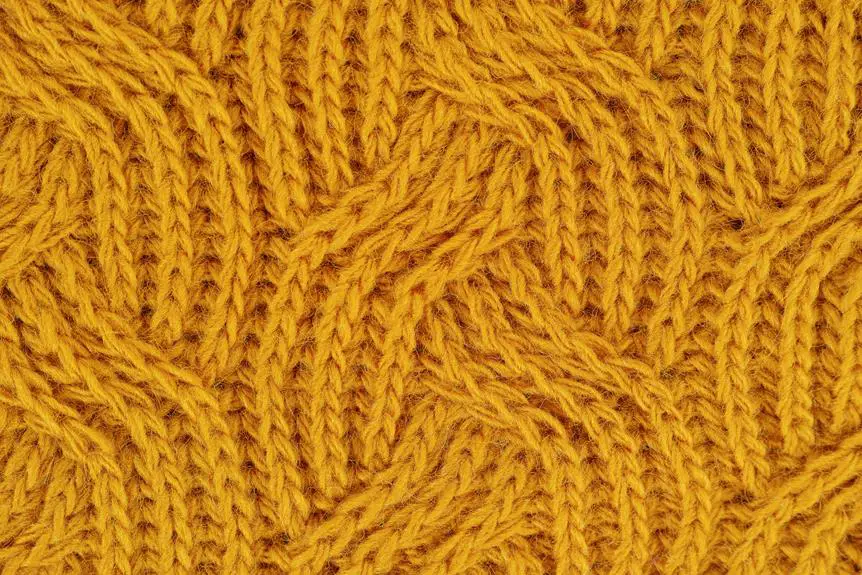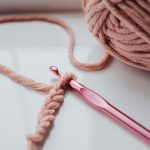When you're considering using chenille for your projects, it's essential to examine various cost factors that can significantly influence your budget. You'll need to account for the initial purchase price, shipping fees, and any applicable taxes or duties if you're importing the fabric. Moreover, the long-term costs associated with maintenance, repairs, and the complexity of your project can add up more than you might expect. As you weigh these financial aspects, think about how these hidden expenses could affect your overall investment—there's much more to uncover.
Table of Contents
Fabric Sourcing Costs
When you're sourcing chenille fabric, it's crucial to consider both the quality and the cost to ensure you get the best value for your project. Start by researching various suppliers to compare prices, but don't overlook the importance of checking customer reviews and ratings. This way, you won't sacrifice quality for a lower price.
Next, factor in any additional costs, like shipping, taxes, and potential duties if you're importing fabric. These hidden expenses can significantly impact your overall budget, so be sure to calculate them into your final costs. It's also wise to visit local fabric stores when possible, as you can often find better deals without the added shipping costs—plus, you can feel the fabric yourself.
You should also consider bulk purchasing. Many suppliers offer discounts for larger orders, enabling you to save money in the long run. If you have a long-term project or plan to use chenille fabric frequently, buying in bulk might be your best option. Evaluating all these factors will help you make informed decisions and stay within budget while sourcing quality chenille fabric.
Fabric Quality and Type
When selecting chenille for your project, fabric quality and type play a crucial role in both appearance and longevity.
You'll want to consider durability factors, such as how the fabric withstands wear and tear, along with the various weave types that can impact costs.
Understanding these elements will help you make informed decisions that align with your budget and design goals.
Fabric Durability Factors
Understanding the fabric quality and type significantly impacts the durability of chenille, ensuring it meets your needs for longevity and performance.
When considering chenille, you'll want to focus on the fibers used in its production. Quality chenille is often made from cotton or acrylic, with each offering different levels of durability. Cotton chenille is soft and breathable but may not withstand heavy use as well as acrylic.
Consider the weight of the fabric as well. Heavier chenille generally demonstrates greater durability since it's denser and able to endure more wear and tear. Additionally, look for a tightly woven finish; looser weaves can lead to fraying and pilling over time.
Another critical aspect is the maintenance required for keeping the fabric in top shape. Chenille can be vulnerable to stains and needs proper cleaning care. Investing in fabric protectors or choosing easily washable options can enhance longevity.
Weave Types and Costs
Different weave types in chenille can significantly affect both the fabric's appearance and its cost, so it's essential to consider how these factors align with your budget and aesthetic preferences.
Chenille is often available in various weaves, such as cut pile or looped pile, each altering the look and price point of the fabric.
Cut pile chenille typically has a more luxurious feel and vibrant appearance, driving its cost up compared to looped pile. You're not just paying for texture; the material and finishing methods used also play key roles in the overall price.
If your project permits, opting for looped pile chenille can save you money while still providing a visually appealing texture.
Additionally, the thread count matters; higher thread counts amplify durability and softness, but they can lead to a higher price.
When selecting the weave type, consider what qualities you value most. Do you prioritize softness, durability, or cost? Understanding these dynamics can help you make an informed decision, ensuring you get the most out of your investment in chenille fabric.
Project Size Considerations
When you're planning a project with chenille, you need to consider the size and complexity.
The amount of fabric you'll need can vary greatly based on the scale of your project and the intricacy of your design.
Understanding these factors helps you make smart budget decisions.
Fabric Yardage Requirements
To effectively plan your project, you'll need to calculate the fabric yardage based on the size and complexity of your design. Start by measuring the areas you want to cover. Whether you're making a throw blanket, pillows, or upholstered items, know your dimensions. For example, if you're covering a sofa, measure its length, width, and height to ensure you've got enough material.
Next, refer to chenille fabric's width, typically around 54 inches. This width will help you determine how many yards you need. For a simple project like a pillow, you'll require less yardage than for more extensive items. As a general guideline, check project-specific patterns or tutorials for accurate estimates.
Keep in mind that fabric manipulation can affect yardage needs, so allow for extra to manage seams and patterns correctly. Also, consider waste from cutting. It's wise to purchase a bit more than your calculated yardage.
Project Complexity Levels
Considering the project's size and intricacy will significantly impact your material requirements and overall design process. When working with chenille, different levels of complexity come into play, affecting both cost and workflow. You'll want to take into account how these complexity levels influence your budget and fabric choices.
Here's a quick overview:
| Complexity Level | Considerations |
|---|---|
| Low | Simple patterns or projects, minimal cutting and sewing time, less fabric needed. |
| Medium | Moderate design features, requires more detail, increases both time and fabric use. |
| High | Intricate designs with multiple elements, demands skilled labor, and significant fabric yardage. |
| Custom | Unique designs tailored to specific needs, potentially unpredictable costs and requirements. |
Understanding these complexity levels can help you budget more effectively. For example, a high complexity project will require more specialized techniques and materials, which can drive up costs. By assessing the intricacy of your design, you can better estimate your expenses and ensure the success of your chenille project.
Maintenance and Care Expenses
Maintaining and caring for chenille can lead to various expenses, especially if you want to keep its luxurious look and feel intact. Regular cleaning is essential, but not all methods are suitable for chenille. You might need to invest in specialized detergents or dry cleaning services, which can be more costly than regular laundry.
Additionally, consider the wear and tear of your chenille items. Depending on usage, you may need to replace or repair sections that get scuffed or damaged. You should also factor in costs for preventive care, such as fabric protectants, which safeguard against spills and stains but might require periodic reapplication.
If you're thinking about deep cleaning, it's wise to hire a professional. They'll know the best techniques to preserve the fabric, but this service comes with a price tag. Also, ensure your cleaning appliances, like steam cleaners, are up to par, as faulty equipment could lead to costly replacements.
In the long run, budgeting for maintenance and care is crucial to avoid unexpected expenses, helping you maintain the elegance of your cherished chenille items.
Waste and Remnant Costs
Waste and remnant costs can add up quickly when working with chenille, as leftover fabric from projects often goes unused or discarded. This inefficiency means you're not getting full value from your fabric investment. Since chenille has a distinct texture, it can be difficult to repurpose remnants for new projects.
If you find you're left with smaller pieces, think about how you can maximize their use or consider planning projects that accommodate these leftovers.
To minimize waste, try to calculate your fabric requirements accurately before you cut. By planning your projects carefully, you can reduce surplus and ultimately save money. Investing in a cutting guide or template can also help you use your chenille more effectively, decreasing waste and optimizing your resources.
Additionally, donate or sell any remnants to local crafting groups or online forums. This approach not only minimizes waste but also helps others benefit from your leftover fabric. Remember, managing waste efficiently isn't just about minimizing costs; it's also about promoting sustainability and responsible fabric usage in your projects.
Long-term Durability Costs
While managing waste is important, understanding the long-term durability costs of chenille can significantly impact your overall fabric investment. Chenille is known for its soft texture and vibrant colors, but it doesn't always boast the same endurance as other materials, like cotton or synthetic blends.
If you're planning to use chenille for heavy-traffic areas, you'll want to consider its wear and tear over time.
As you evaluate durability, think about how often you plan to clean and maintain the fabric. Frequent vacuuming and occasional professional cleaning can help extend its lifespan but come at a cost.
Additionally, factors such as sun exposure can fade colors and weaken fibers, leading to premature replacement.
To truly assess the long-term costs, factor in potential repairs and replacements. While chenille may be less expensive initially, chronic wear may require you to replace your fabric sooner than expected.
Therefore, you're not just investing in the upfront price; you're also looking at the long-term performance.
Ultimately, understanding these durability costs will help you make a more informed decision that aligns with your lifestyle and budget.
Frequently Asked Questions
How Does Chenille Compare to Other Fabrics in Cost?
When you compare chenille to other fabrics, you'll notice that it often sits in the mid-range price tier. Its texture and appearance might justify the expense, especially if you value comfort and aesthetics.
Are There Cheaper Alternatives to Chenille for Similar Projects?
Absolutely, you've got several options! Fabrics like polyester, fleece, or even cotton blends can provide a similar texture and appearance without breaking the bank. Explore these alternatives for your project—it could save you money!
What Are the Average Costs for Hand-Crafted Chenille Items?
When shopping for hand-crafted chenille items, expect costs to range from $20 to $200, depending on size, complexity, and craftsmanship. You'll find unique pieces that reflect true artistry and dedication in each creation.
Do Bulk Purchases of Chenille Reduce Overall Costs Significantly?
When you make bulk purchases of chenille, you typically benefit from significant discounts. Suppliers often reduce prices for larger orders, allowing you to save money while stocking up on quality materials for your projects.
Are There Seasonal Sales or Discounts for Chenille Fabric?
Yes, you'll often find seasonal sales or discounts for chenille fabric, especially during holiday events or clearance sales. Keep an eye on fabric stores and online retailers to snag good deals throughout the year.
- How Does Ring Spun Cotton Affect Garment Fit and Shape Retention? - August 13, 2024
- What Are the Challenges in Producing Ring Spun Cotton? - August 13, 2024
- Is Ring Spun Cotton Suitable for Plus-Size Clothing? - August 13, 2024






